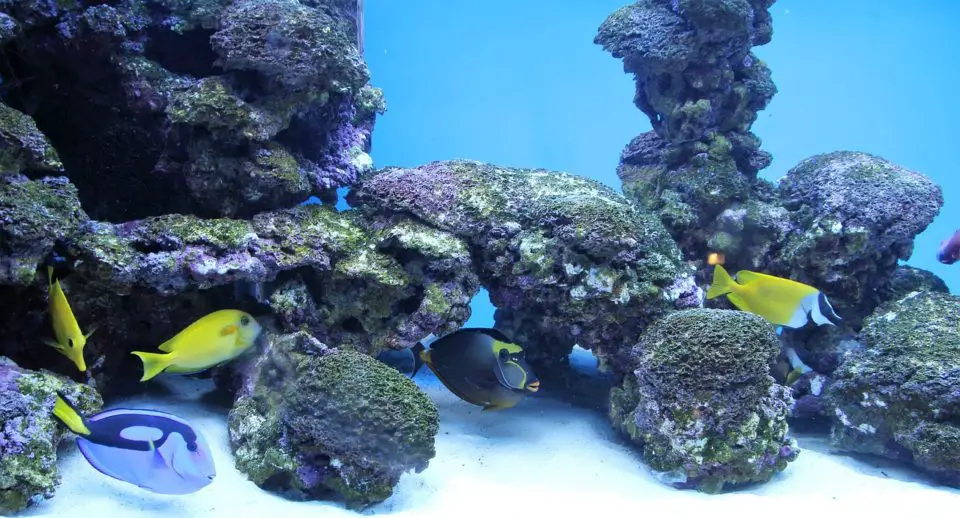A peaceful aquarium full of colorful fish is a beautiful sight—but keeping your aquarium clean and free of algae can be a tricky task. The right filter is an incredible help, but even filters can’t pick up everything.
Uneaten food that has sunk to the bottom of the tank and films of algae growing on the glass can foul the water and tarnish the beauty of your tank.
Luckily, there are fish that specialize in cleaning your tank: bottom feeder fish.
Bottom feeder fish don’t replace a filter; rather, they work alongside your filter and clean up pieces of food and algae that your filter can’t reach.
Not only do bottom feeder fish work night and day to keep your tank sparkling clean, they are full of personality and many of them have an exotic, striking appearance all their own.
My name is Michelle Ropp, and in my history of owning tanks of several sizes, bottom feeder fish were some of my favorite species.
I loved them so much, in fact, that I preferred to keep more bottom feeders than necessary just because they were a joy to keep. Some of my tanks were half-filled with bottom feeder fish.
There are a lot of different bottom feeder fish to choose from, too. Whether your tank is small or enormous there is bound to be a perfect bottom-feeder that suits your needs.
1) Chinese Algae Eaters
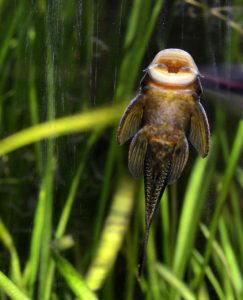 Chinese Algae Eaters have a suckermouth that is super-efficient for cleaning and come in a variety of colors sported on a streamlined body.
Chinese Algae Eaters have a suckermouth that is super-efficient for cleaning and come in a variety of colors sported on a streamlined body.
They generally stay small but can get up to five inches in length. At any size, these bottom feeder fish are hard workers, though—especially when they are younger.
They scrub aquariums so thoroughly that if they run out of spots to clean, they can go after large or slow-moving fish to strip off their slime coat, instead.
Because of this and their aggressive, territorial tendencies, Chinese Algae Eaters do not do well with big, slow fish.
They get more aggressive the older they get, too. Because of this, Chinese Algae Eaters do best in larger tanks with quick tankmates and plenty of hiding spots.
As their name suggests, Chinese Algae Eaters specialize in scrubbing algae from any and all surfaces. They are hardy, highly-active fish that prefer medium to large tanks.
Due to their territorial nature, only one Chinese Algae Eater should ever be in any tank, and it’s best to avoid keeping them with any fish similar in size an appearance in order to keep the peace.
2) Common Pleco (Plecostomus)
One of the most well-known bottom feeder fish is the Common Plecostomus or Pleco for short. Plecos are a type of armored catfish with a suckermouth that is perfect for cleaning algae off of any surface.
Unsurprisingly, this is their favorite food. Plecos are pros at sucking algae off of glass until it is crystal-clear once more.
Common Plecos start out small. They are often only a couple of inches long when they are sold in pet stores—but these babies grow up to an impressive size.
An adult Common Pleco can grow up to twenty-four inches long and live up to fifteen years.
They are also fiercely independent and treasure their privacy, so Common Plecos do best in large tanks with quiet hiding spots and plenty of room to spread out.
As long as they have enough space, Plecos can co-exist with most fish.
They can sometimes be territorial with other Plecos, though, so if you are planning on getting more than one the best way to do it is to introduce them while they are both young and make sure they both have plenty of space to stretch out.
Plecos tend to be laid-back and don’t bother other fish unless they are bothered first. If another fish tries to bully them out of their favorite hiding spot, though, they will stand their ground and defend their spot.
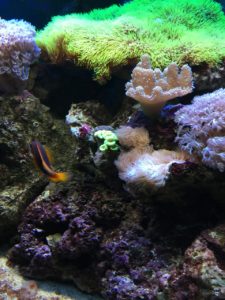
Though they tolerate the presence of other fish and other bottom feeders, Plecos don’t need a buddy. They are just as content if they are the only bottom feeder in the tank.
You may not see Plecos often during daylight hours, as they are nocturnal by nature. They prefer to retreat to dark, quiet places after their nightly rounds.
If you look in on them during the evening, though, you’ll often see them hard at work cleaning everything in sight.
Plecos are extremely hardy fish, as well. They are easy to care for (just toss in an algae wafer here and there to supplement their diet) and rarely get sick.
They do jump sometimes, though, so it’s best to keep a lid on your tank if you include any Common Plecos in your aquarium.
3) Ghost Shrimp
Though not technically a fish, Ghost Shrimp are incredibly popular bottom feeders that are affordable, small enough for any tank, and inconspicuous.
These shrimp are translucent and sometimes known as Glass Shrimp due to their ethereal appearance. They are easy to care for and are pros at digging uneaten food and algae out from the bottom of the tank.
Ghost Shrimp are relatively peaceful and do best with small, fast, non-aggressive fish. They may pick on slow fish and may be seen as food by large fish.
Ghost Shrimp only get up to one inch long, so they are just as suited to small tanks as they are to large ones. They live up to just one year and are just as happy on their own (a lone Ghost Shrimp) or in a group.
Ghost Shrimp, like most bottom feeders, prefer to have a hiding spot to retreat to when they need to rest. Though not required, they love live plants and will often hide among them while also cleaning up any debris.
Ghost Shrimp are prone to nibbling on plants, though, so hardy plants that can tolerate a little nibbling work best with these bottom feeders.
Ghost Shrimp are tolerant of a wide variety of tank conditions and are hardy by nature. Due to their size, they are sensitive to strong currents, so a gentle filter flow works best for these delicate bottom feeders.
4) Bristlenose Pleco (Plecostomus)
The Bristlenose Pleco is a lot like the Common Pleco in many respects. They have a similar appearance, similar demeanor, both are passionate algae-cleaning fish, and both are nocturnal and independent by nature.
Unlike its common cousin, the Bristlenose Pleco sports multiple whiskers on its face. This is barely noticeable in females, where the whiskers appear almost like little bumps.
In male Bristlenose Plecos, however, the bumps on their face eventually grow into an impressive bush of whiskers.
The other most notable difference between the Bristlenose Pleco and the Common Pleco is in their size. Bristlenose Plecos get up to five inches long, which makes them much better candidates for smaller tank sizes.
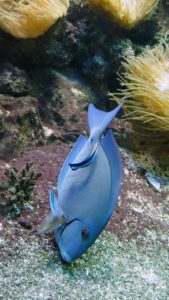
They live for five or more years and are generally peaceful like their common counterparts.
The Bristlenose Plecos that I had in the past got along well with fish of all kinds—other bottom feeders, livebearers, and even semi-aggressive fish.
They kept to themselves and were happy just to clean up the tank, stretch their fins, and then cozy up inside of their hiding spots.
Privacy is important to Bristlenose Plecos as well, so it’s important for them to have a space to retreat to during the day, as well.
5) Cory Catfish
Though I loved my Bristlenose Plecos, my favorite bottom feeder fish were, hands-down, Cory Catfish. These pint-sized bottom feeders love to scoot their way around with a buddy or two and are as peaceful as they come.
Cory Catfish come in a variety of colors, don’t get very large (one to two-and-a-half inches long), and are social by nature. They are easy to care for and get along with all kinds of fish.
Cory Catfish are experts at ferreting out uneaten pieces of food from the bottom of your tank which, along with a trusted filter, keeps your water pristine.
With their small size, Cory Catfish are perfect for almost any size tank. Due to their social nature, they prefer to be in groups of at least two Cory Catfish. Groups of six are better if your tank is large enough.
Like most bottom feeders, Cory Catfish prefer to have a quiet place to retreat to when they want to rest, so having hiding spots helps to keep them happy.
Cory Catfish tend to be hardy fish, too. Like Plecos, they are tolerant of a wide variety of water conditions and rarely get sick.
They are sensitive to high levels of nitrates, though, so it’s best to avoid stirring up the bottom of the tank too much when cleaning.
Cory Catfish are great bottom feeders to pair with a Common Pleco or Bristlenose Pleco if you have enough room for both.
Plecos specialize in cleaning up algae while the Cory Catfish vacuum up uneaten food, making them a great team—even if the Plecos keep to themselves.
Unlike Plecos, Cory Catfish are more active during the day, too. By having both, you essentially get a 24/7 cleaning crew for your tank.
Final Thoughts
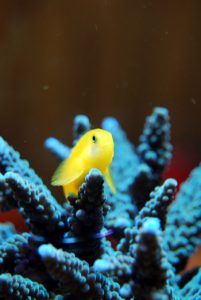 There are many other bottom feeder fish and invertebrates for aquariums. Snails and loaches are also popular choices and come in a range of different types.
There are many other bottom feeder fish and invertebrates for aquariums. Snails and loaches are also popular choices and come in a range of different types.
These five bottom feeder fish are some of the most popular for good reason, though, and available from almost any pet store.
Whether you get a Bristlenose Pleco, Kuhli Loach, or a pack of Cory Catfish, these bottom feeders will work with your filter to keep your tank shining and clear, though.
And, like me, you might find you enjoy watching them work just as much as you love watching your other fish.
